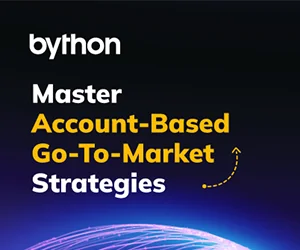2022 was a rocky year for cryptocurrency, with a bearish economy causing a downswing in demand as well as crypto values. On the other hand, metaverse and blockchain-based app development is moving forward in full swing, which indicates potentially growing demand for crypto trends in the future.
On the occasion of Halloween this year, we have out together a list of the top crypto trends that will influence your decision-making in 2023. Will the upcoming quarters turn out to be a trick or a treat? Read on for our verdict.
1. Tightening regulations
In 2022, there were several important laws on cryptos, notably China outlawing all crypto-related operations and U.S. authorities regulating some market features. Regulators have also started to examine the DeFi industry. Analysts expect regulations to play a crucial role in the cryptocurrency sector.
Regulators are exerting efforts to curb the volatile nature of the cryptocurrency industry. This would help alleviate the negative effects of a huge sale. In addition, the restrictions would reduce the use of cryptocurrencies for unlawful activities and keep a watch on crypto sharks. In a market that is already volatile, regulatory statements may initially impact the price of cryptocurrencies.
Our verdict: Regulations are generally beneficial for the sector. Sensible regulation is beneficial for all parties since it increases the trust of bitcoin investors. Whether prices rise or fall as a result of the news, it is vital to remember that the volatility is transient. This Halloween, remember that all changes take time to get adjusted to and aren’t necessarily a cause for fear!
2. New generations of blockchain and crypto
The second development that we will notice is the maturation of new blockchain solutions of the third and fourth generations. Platforms of the third generation of blockchain technology, such as Aion, Cardano, and EOS, used sharding to reduce transaction fees and increase transaction speed.
There are also blockchains of the fourth generation designed to facilitate trust. Interesting blockchain systems of the fourth generation, such as Insolar and Aergo, make business networks simpler to use by hiding the complexities of the foundational blockchain tech. In addition to facilitating easier rollout, they will make pragmatic concessions, such as acknowledging that not all consensus-based transactions are created equal.
Our verdict: These new generations of blockchain and crypto are focused on eliminating speed and scalability barriers. They will hasten the establishment, administration, and reconfiguration of enterprise networks. Instead of coming as a shock, it is better to stay prepared for a world where the very definition of cryptocurrency evolves over time.
3. Greater interoperability in the offing
Those who have previously used services and apps built on distinct blockchains and associated platforms are familiar with the challenges this may bring. Investors demand multiple cryptocurrency wallets, and the transfer of assets from one blockchain network to another might require in-depth understanding. The same holds true for monies that must be transferred across layers — for example, from the Ethereum blockchain (layer 1) to Polygon (layer 2).
Moreover, Ethereum transactions are now exceedingly expensive. Transferring coins from Ethereum to something like a second-layer protocol may incur transaction costs between $50 and $100, regardless of the amount moved.
As monies are dispersed over several apps and wallets in the crypto sector, these disparities result in a negative user experience. MetaMask and similar services provide a wallet service that enables users to connect to several blockchain systems and tiers using the same wallet. Other tools, like Zapper, allow you to monitor your DeFi portfolio from a single location, regardless of the chain or the layer in which the money might have been invested. However, further bridge building is still necessary.
Our verdict: Greater interoperability would definitely be a Halloween treat and not a trick! Current services are fledgling steps on the road to an interconnected crypto world, but they are insufficient to ameliorate the difficulties posed by multi-chain environments. Fortunately, some large-scale initiatives have begun to address the issue, such as Polkadot’s Relay Chain infrastructure.
4. Impact on the environment
As the Bitcoin sector has grown steadily over the years, more attention has been paid to its carbon impact. Bitcoin and other digital currencies are “harvested” by high-powered computers vying to solve complicated mathematical problems, which consume energy and contribute to global warming if they do not operate on renewable power.
According to an index published by the University of Cambridge, Bitcoin mining is presently projected to account for around 0.5% of worldwide electricity use, using more energy than Sweden consumes in an entire year.
Our verdict: The environmental fallout from crypto is a very real “Halloween fear,” which is why we are seeing the rise of “greener” blockchains that need a fraction of the energy consumed by traditional ones like Ethereum. This trend, combined with regulations, should push the industry in a positive direction in 2023.
5. The mainstreamization of DeFi
DeFi (Decentralized Finance) apps have perhaps garnered the greatest interest within the crypto community. On the blockchain, conventional financial transactions are executed. Typically, these transactions are facilitated through smart contracts. And, unlike conventional payments or transfers, there is no need for financial intermediaries.
Typical DeFi transactions vary from conventional lending to the development of derivatives. Total Value Locked (TVL), an indicator of the combined worth of cryptocurrencies allocated to an intelligent DeFi contract, increased from $2 billion in 2018 to $15 billion in 2020, according to DeFi Pulse. And 2021 saw record growth in TVL, which finished the year at about $100 billion.
Our verdict: DeFi bubbles up a potential Halloween treat in an economy going through difficult times. For instance, yield farming, a popular DeFi service, entails leasing cryptos to other platforms in exchange for interest or fresh cryptocurrencies. Due to the greater yields they may give depositors, yield farming systems have garnered significant attention during the current context of low-interest rates. However, the ink has not yet dried on this pattern.
As another quarter ends, it is time to take stock of existing portfolios and the crypto industry overall and tweak decisions for future trends. Cryptocurrencies are here to stay, and understanding the role of crypto as a Fintech staple is key for you to stay a step ahead.







